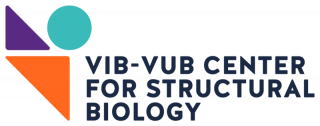Research activities of the Steyaertlab

Nanobodies to lock protein conformations and study structure and function
We pioneered the use of Nanobodies as exquisite tools to freeze dynamic proteins into single functional conformations. Nanobodies are the variable domains of heavy-chain only antibodies that naturally occur in camelids. X-ray crystallography or single particle cryo-EM can then be used to determine the structures of different stills of the same moving biomolecule. The power of this approach compares to the series of photographs that Eadweard Muybridge made in 1878 to uncover if a horse that trots or gallops does ever become fully airborne.

Nanobodies to freeze protein complexes
In a landmark study, we developed Nbs that stabilize the β2AR-Gs complex. One of these Nbs that inhibits the GTP driven dissociation of β2AR-Gs was instrumental for obtaining the high-resolution crystal structure of this complex, providing the first view of transmembrane signaling by a GPCR. In two other studies, we developed Nbs that stabilize Vps34 complex II of yeast and the PINK1-Ubiquitin enzyme-substrate complex, respectively.

Expanding Nanobody utilities
We developed Megabodies to expand cryo-EM analysis to proteins that are small and/or display preferential orientation in ice, two major factors that limit the resolution of reconstructed density maps. Such megabodies were used to solve the high resolution cryo-EM structure of the human synaptic GABAA receptor and uncover its signalling mechanisms.
Nanobodies for better drug discovery
By fusing Nanobodies that exhibit G protein-like behavior, we were able to lock β2AR, M2R or MOR constitutively in their active conformation. These GPCR-Nb fusions (ConFoFusions) have a unique pharmacological profile that is similar to the G protein bound receptor and allow the screening of fragments that selectively bind the active conformation of these receptors







